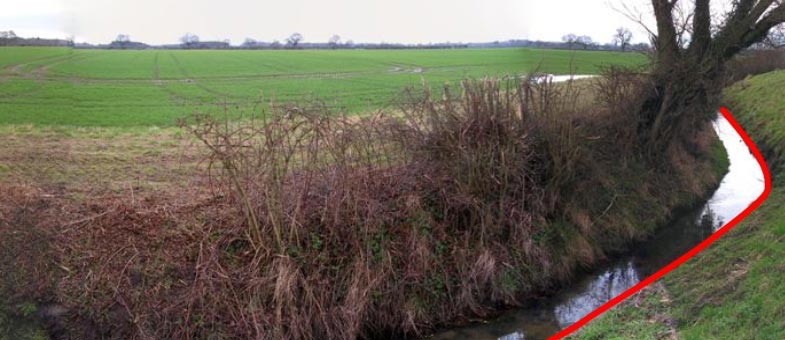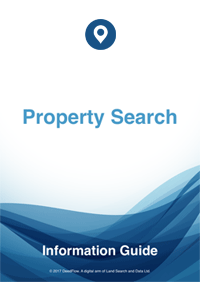Ditches and Hedges
Contents
Boundary Hedges with Ditches
The best known boundary presumption is the ditch and hedge rule, which is that in the absence of evidence to the contrary, where two properties are separated by a ditch and a hedge the boundary is presumed to be on the far side of the ditch from the hedge. This is based on the surmise that a landowner, when creating a ditch at the side of his property, will throw the spoil onto his own land and will plant the hedge in the spoil.
Evidence to the contrary, if there is any, will usually appear in the property's ownership documents, and also in the adjoining property's ownership documents. In particular this would be the Title Registers and/or the Associated Documents. For this reason it makes sense to obtain a Boundary Search before embarking on a more costly exercise to clarify the boundary position.
Where the above documents are of no assistance it might still be possible to provide rebuttal evidence. A leading case demonstrating this rule is the case of Vowles v Miller 1810. Leading cases set the precedent for other cases where the facts are similar, and this leading case has been followed many times. This is how a common law presumption comes into effect. The common law is law that is made by decisions of the High Courts, i.e. the Supreme Court (House of Lords prior to October 2009) and the Court of Appeal.
Ditch and Hedge
The presumed boundary in this image is shown as a red line on the far side of the ditch from the hedge.

Vowles v Miller 1810
In his judgement, Lawrence J quoted:
"The rule about ditching is this. No man, making a ditch, can cut into his neighbour's soil, but usually he cuts it to the very extremity of his own land: he is of course bound to throw the soil which he digs out, upon his own land; and often, if he likes it, he plants a hedge on the top of it. Therefore, if he afterwards cuts beyond the edge of the ditch, which is the extremity of his land, he cuts into his neighbour's land, and is a trespasser."
Parmar and Others v Upton 2015
This is a more recent decision of the Court of Appeal, but the judgment given by the Lord Justices, followed the decision of Vowles v Miller, demonstrating that the principles established by that leading case continue to apply today.
Alan Wibberley Building Ltd v Insley 1999
This was a decision of the House of Lords following an appeal from the Court of Appeal. In his judgment Lord Hoffman pointed out that the ditch and hedge rule involves two successive presumptions, i.e.
- that the ditch was dug after the boundary was drawn.
- that the ditch was dug and the hedge grown as described in Vowles v Miller (atop the spoil from the ditch).
He then states that if the first presumption is displaced by evidence showing the ditch already existed before the boundary was drawn, e.g. as an internal drainage ditch, which only later became a boundary following sale of part of the land, then the reasoning in Vowles would not apply.
In this case Insley had purchased an extra strip of land from Burton who owned part of the land. Wibberley now owned the other part. Insley relied on the ditch and hedge presumption and cleared the hedge, which he maintained was on his land. It was argued by Wibberley that the boundary, in fact, lay through the centre of the hedge and not on the far side of the ditch. After a detailed study of the history of ownership of the land, and all the deeds and deed plans pertinent to their respective ownerships, the conclusion was that the ditch and hedge rule still applied to this case.
Lord Craighead, in his judgment, stated "In this situation it seems to me that the hedge and ditch presumption, far from being a touchstone of last resort, as Simon Brown L J put it in 1998, is the best guide to the line of the boundary."
Ditch and Hedge Rule today
The ditch and hedge rule applies as much today as it did in 1810. In may, however, be possible to rebut the presumption if there is clear and distinct evidence that the ditch was already in existence, e.g. for drainage of the owner's land, and that thereafter a parcel of land was sold off that contained the ditch. Any such evidence, however, must be absolutely certain and provable.
Boundary Search 2 Properties
Obtain all the available property documents held to help resolve common boundary problems. For 2 Adjoining Properties.
£99.95Boundary Search 3 Properties
Obtain all the available property documents held to help resolve common boundary problems. For 3 Adjoining Properties.
£146.95Boundary Search 4 Properties
Obtain all the available property documents held to help resolve common boundary problems. For 4 Adjoining Properties.
£193.95


